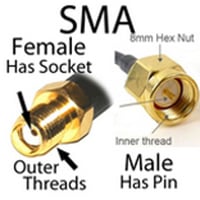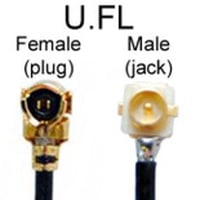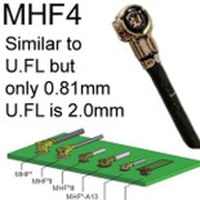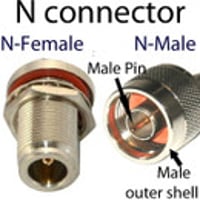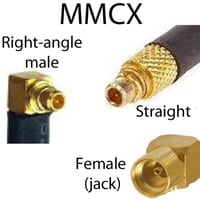SMA male (straight) To SMA female Right Angle Cable: 3-inch, 4-in, 6", 8", 13", 20", 22", 28-inch
- SKU:
- Sm3iSfRA100
- Availability:
- In stock
- Weight:
- 0.04 LBS
Data Alliance
SMA male (straight) To SMA female Right Angle Cable
Antenna Cable: SMA Male (straight) to SMA Female right-angle: Double-shielded cable
One end has an SMA-male right-angle type connector, and the other has an SMA-female connector, the straight type with a bulkhead mount (nut and washer).
Compatibility with wireless applications: Our SMA cables' range of frequency band compatibility (from 0GHz to 18GHz), consistently low broadband VSWR, and impedance matching to 50 Ohm cables makes them compatible and compliant for all the following applications:
- All WiFi standards: 2.4GHz and 5GHz applications: 802.11AC, 802.11N, 802.11G, 802.11B, 802.11A
- Cellular Wireless LTE / 4G, GSM / 3G WiMAX: Data and voice applications.
- IoT wireless, automation & M2M: Bluetooth, ZigBee, RFID, LoRa, LTE-m, NB-IoT.
- Compatible with all Helium miners used in Europe, including Bobcat miners, Sensecap miners, and all other Helium LongFi miners, as are all of our antenna cables and adapters with SMA-male connectors.
- The cable is double-shielded, low-loss, and very flexible. The cable type is equivalent to or better than LMR-100: Coax with a black jacket has the same or better signal loss per meter and flexibility as LMR100 and less attenuation (signal loss) than RG174. The higher quality of the cable of this antenna translates into lower loss/better performance. Coax is rated for outdoor use and is also suitable for indoor use.
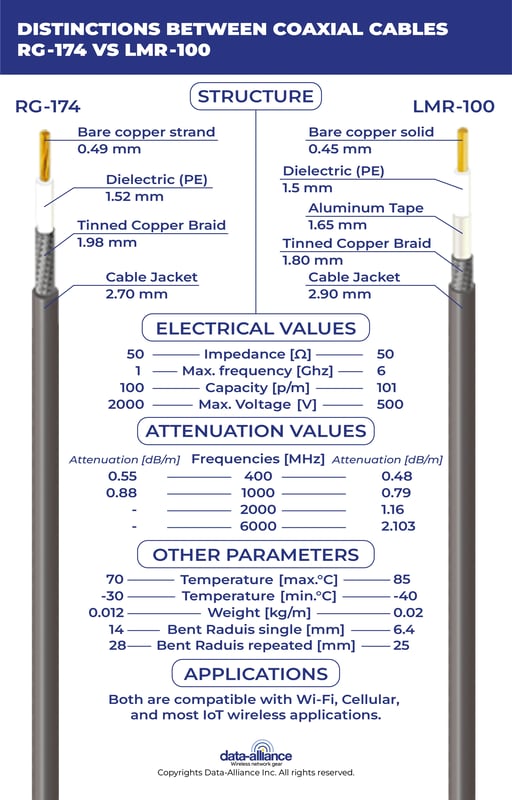
The temperature range for operational use of this 100-series coax and the cable assembly is: -22 F ~ +185 F (-30 C ~ +85 C)
ROHS & REACH compliant: All of our antenna cables and adapters are free of lead and other toxic materials restricted by RoHS 3 and REACH.
Data Alliance's high-quality soldered terminations of SMA connectors with soldering provide a low-loss connection with discontinuities kept to a minimum.
SMA Connector Characteristics and Details

- SMA female connector includes a bulkhead nut and washer:
- This can be used to mount the connector (and thus the cable) on the wall of a network enclosure (to weatherproof the cable connection) or on a case, panel, or Printed Circuit Board (PCB).
- Weatherproofing: Seal the hole where the female connector is mounted by placing an O-ring between the enclosure's wall and the bulkhead nut and washer on the female connector.
- Our cables with SMA and RP-SMA female connectors have bulkhead mount hardware.
- Our standard SMA-female connector (threaded part) is 3/8 inches long. We have a more extended option: 14.5mm, which is available. The longer 14.5mm option has an O-ring embedded in the flange to waterproof the port where the cable enters a network enclosure.
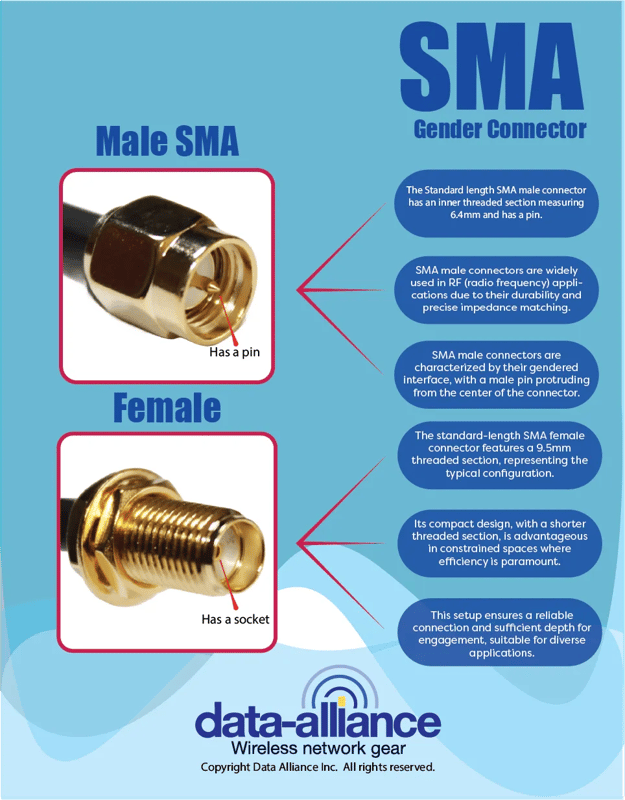
- SMA Gender Determination: Key Point
- SMA gender is counter-intuitive: Please observe picture & note it is correct.
- The gender is referring to the pins inside-not the threads. SMA male has threads on inside.
SMA-male has a pin inside the connector body
Related Cables and Adapters
- SMA Cables directory
- SMA Adapters
- SMA Extension Cables: Male to Female with straight and/or right angle connectors
Frequently Asked Questions
1. What is the dielectric material used in this cable, and how does it affect performance?
The cable uses PTFE (Polytetrafluoroethylene) as the dielectric material, providing low signal loss and high thermal stability, crucial for maintaining performance across various temperatures.
2. How does the cable's shielding effectiveness compare to standard cables?
This cable features double shielding, including a braided copper shield and an aluminum foil layer, significantly reducing EMI and RFI, offering superior shielding effectiveness compared to standard single-shielded cables.
3. What impact does connector plating have on signal integrity and longevity?
The SMA connectors are gold-plated, which minimizes contact resistance and prevents oxidation, ensuring consistent signal integrity and extended connector lifespan.
4. What are the implications of using this cable in high-vibration environments?
The robust construction and secure connection of the SMA connectors make this cable suitable for high-vibration environments, ensuring stable and reliable performance.
5. How does the cable's construction influence its durability in harsh environments?
The use of high-quality materials like PTFE dielectric and a durable outer jacket enhances the cable’s resilience against mechanical stress, temperature extremes, and chemical exposure.
6. What specific applications benefit most from this cable's frequency range?
Applications such as high-frequency RF communication, aerospace, and defense systems benefit significantly from the cable’s ability to operate effectively up to 18 GHz.
7. How does the cable's power handling capability change with frequency?
The cable can handle up to 100 Watts of RF power at lower frequencies; however, this capacity decreases at higher frequencies due to increased insertion loss and potential heating.
8. What maintenance practices are recommended to ensure long-term cable performance?
Regular inspection for physical damage, cleaning the connectors to prevent contamination, and ensuring secure connections can help maintain optimal performance over time.
9. How does the cable's bend radius affect its installation flexibility?
The recommended minimum bend radius is 1.5 times the cable diameter, which allows for flexibility in installation without compromising the cable’s structural integrity and performance.


